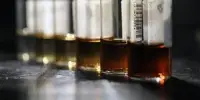Fungi have been studied for a variety of purposes, including their use in sustainable materials and biodegradable products. Some researchers have looked into using fungi to create new types of building materials, such as mycelium-based composites that can be grown into specific shapes and used in construction applications.
Scientists have demonstrated that fungi can be grown in thin sheets that could be used for fire-retardant cladding or even a new type of fungal fashion. Mycelium, a remarkable network of fungal strands that can thrive on organic waste and in darkness, could serve as the foundation for long-term fireproofing. To harness its fire-retardant properties, RMIT researchers are chemically manipulating its composition.
Mycelium can be grown from renewable organic waste, according to Associate Professor Tien Huynh, an expert in biotechnology and mycology.
“Fungi are usually found in a composite form mixed with residual feed material, but we discovered a way to grow pure mycelium sheets that can be layered and engineered into different uses – from flat panels for the building industry to a leather-like material for the fashion industry,” Huynh from the School of Science explained.
The novel method of producing paper-thin mycelium sheets, similar to wallpaper, works without pulverizing the mycelium’s filament network. Instead, they used a variety of growth conditions and chemicals to create the thin, uniform, and, most importantly, first-rate material.
Bromide, iodide, phosphorus, and nitrogen-containing fire retardants are effective but have adverse health and environmental effects. They pose health and environmental concerns, as carcinogens and neurotoxins that can escape and persist in the environment cause harm to plant and animal life.
Everson Kandare
Fungi fireproofing our buildings
The researchers are working to develop bio-derived, fire-retardant cladding for buildings in order to avoid tragedies like the Grenfell Tower fire, which was accelerated by a highly combustible cladding component. Associate Professor Everson Kandare, co-author of the paper and an expert in the flammability and thermal properties of biomaterials, believes mycelium has great potential as a fireproofing material.
“The great thing about mycelium is that when exposed to fire or radiant heat, it forms a thermal protective char layer.” “The longer and higher the temperature at which mycelium char survives, the better it can be used as a fireproof material,” Kandare explained.
Beyond being effective, mycelium-based cladding can be produced from renewable organic waste and is not harmful to the environment when burned, he explained. Where composite cladding panels are used, they usually contain plastics – which produce toxic fumes and heavy smoke when they burn.

“Bromide, iodide, phosphorus, and nitrogen-containing fire retardants are effective but have adverse health and environmental effects. They pose health and environmental concerns, as carcinogens and neurotoxins that can escape and persist in the environment cause harm to plant and animal life,” said Kandare. “Bioderived mycelium produces naturally occurring water and carbon dioxide.”
Bringing the research to life
This research could eventually lead to better and more environmentally friendly building cladding. “Plastics are quick and easy to produce, whereas fungi grow slowly and are relatively difficult to produce at scale,” Huynh explained.
“However, the mushroom industry has approached us about using their fungal-incorporated waste products.” Collaboration with the mushroom industry would eliminate the need for new farms while producing products that meet fire safety needs in an environmentally friendly manner.”
The researchers are now attempting to develop fungal mats reinforced with engineering fibers in order to delay ignition, reduce flaming intensity, and improve fire safety rankings.
















